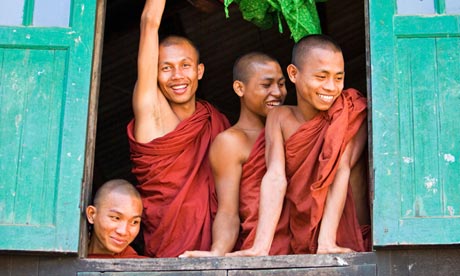The modernist phase of Burmese poetry, known as khitsan (meaning “testing the times”), emerged in the 1930s from Rangoon University and was associated with opposition to British colonial rule. Since then, poetry in Burma has retained a political significance unthinkable in the west. The odd dim schoolteacher aside, who would seek to censor poets in Britain, for example? When the military seized power in 1962, Burma became in many respects a closed country, culturally as well as politically – “a Stone Age cave sealed by stones”, in the words of Maung yu Pi in ‘The Great Ice Sheet’, leaving “a great culture, dilapidated and yellowing”. Poetry, with a long and distinguished history in Burma, is a form to which the country’s readers naturally turn. Under the permafrost of dictatorship, poets needed ways to write without finding half the words inked out. They proved as ingenious in metaphor as the times required.
This is not a new story: eastern Europe was the same before 1989 (and eastern European poets were among those read by Burmese writers). We must wait to see if the same price – the collapse of the literary audience – is paid for liberty in Burma, although the deeply embedded traditions of Buddhism, which appear frequently in the poems, might arrest that process. Zeyar Lynn‘s introduction to <i>Bones Will Crow</i>, the first anthology of contemporary Burmese poetry, sketches various contemporary positions that have grown out of the movement away from the traditional poetic form of the internally rhymed, four-syllable line. There is a broad church approach, as well as 1970s innovation (khitpor) and the contemporary postmodern (does this sound familiar?). It sets the scene for future disappointment without directly invoking the possibility.”


No comments:
Post a Comment